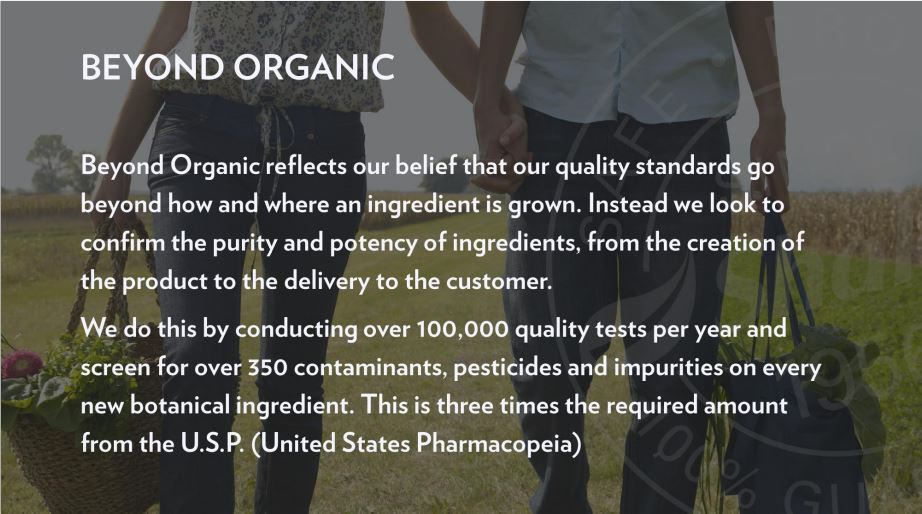 The slide above comes from Shaklee’s New Health Chat on Nutrition. As soon as I can tackle a simple way to share the chat online, I would like to share it. I like the Health Chats that Shaklee is putting together because they are focused on particular aspects of health concerns, but each stresses the underlying foundation of longevity and purity for Shaklee’s products. This slide actually expresses what I shared in my last post about the testing that Shaklee does to ensure purity and quality of its products.
The slide above comes from Shaklee’s New Health Chat on Nutrition. As soon as I can tackle a simple way to share the chat online, I would like to share it. I like the Health Chats that Shaklee is putting together because they are focused on particular aspects of health concerns, but each stresses the underlying foundation of longevity and purity for Shaklee’s products. This slide actually expresses what I shared in my last post about the testing that Shaklee does to ensure purity and quality of its products.
Most people are aware that buying as many organic products as you can afford is desirable. Many may know that there are a “dirty dozen” that should always be purchased as organic: Dirty Dozen & Clean 15 . However, if we think about it, even when nothing toxic is intentionally used in the growing of a plant, this does not take into consideration that ground water or rain water could be contaminated or that a crop duster wasn’t spraying another field in such a way that the wind blew contaminants onto an organic field. That is why Shaklee tests the raw materials to their products for 350 contaminants. Factories that process food can also contain contaminants. There was actually an instance when Shaklee tested the leaves used for a particular product for the 350 contaminants. They came out clean. Then, the leaves were dried and crushed and put into tablet form. When the finished product was tested, lead was found. Shaklee rejected the finished product and insisted that the company discover and remedy the source of the contamination or they would not use them to process their products. The company ended up finding that the stainless steel balls that were used to crush the dried leaves were weighted inside with lead. The lead was leaching through and contaminating the leaves. The company got rid of the stainless steel balls and replaced them with ceramic balls. There is another instance when Asia was experiencing more rain than usual and when Shaklee tested the raw ginseng from their supplier, fungicide was detected. It turns out that the ginseng was sitting on the docs with so much wetness that they were spraying it with fungicide. It took Shaklee about a year to locate a supplier that had ginseng that was not tainted with fungicide. Ginseng products were on shelves everywhere that year, however, Shaklee’s product with ginseng was unavailable for that whole time that they were searching for a clean source. Ginseng was popular and pulling the product meant Shaklee realized a monetary loss on sales for that product. But Shaklee is committed to purity, even if it means that they cannot sell certain products for a time. This commitment to purity is what puts Shaklee in the “Beyond Organic” category.
Also, with today being April 7th, I wanted to re-share the interview that Shaklee’s CEO, Roger Barnett, did a year ago today. It is archived on our Better Health website and the link to listen is here: ABCs of Vitamins for Optimal Beauty, Health and Fitness!
Roger has been leading Shaklee since 2004 with the same integrity and commitment to “Harmony with Nature” that Dr. Shaklee began Shaklee back in 1956. Shaklee has enjoyed over 60 years as a company and I think that it is a testament to Shaklee’s commitment to purity that they have never had a recall on one of their products. Yet, Dr. Shaklee’s commitment to Nature goes back even farther that Shaklee as a company. Dr. Shaklee developed the very first multivitamin in the United States over 100 years ago in 1915. Take a look below at an original bottle of Dr. Shaklee’s Vitalized Minerals. His formula is still sold today as LiquiLea. I hope you enjoy Roger’s Radio interview on its 1 year anniversary….or whenever you read this post. 🙂 

Leave a comment